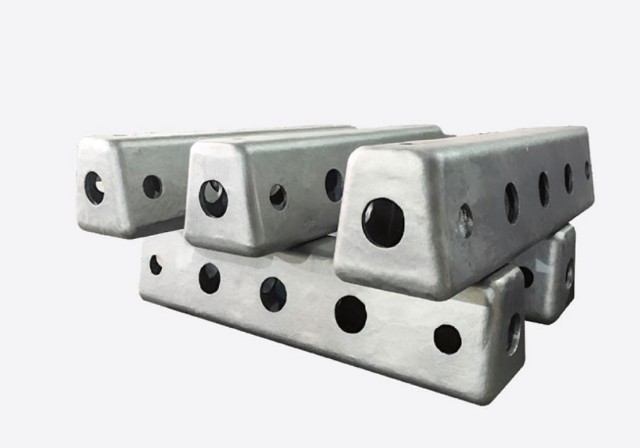In the field of mechanical manufacturing, centrifugal casting and forging are two commonly used metal forming processes, each with its own advantages and disadvantages in terms of product performance, production efficiency, and cost. Choosing the appropriate process depends on the specific requirements of the product, as well as comprehensive considerations of materials, dimensions, precision, and other aspects. This article will explore the selection criteria for centrifugal casting and forging technology from the following aspects.
1.1 Size and shapeCentrifugal casting is suitable for manufacturing hollow parts with large external dimensions and complex shapes, such as pipes, shafts, etc., while forging is more suitable for manufacturing solid parts with relatively simple shapes, such as gears, crankshafts, etc.

1.2 Material strength and performanceCentrifugal casting products usually have high density, which can effectively improve the strength and fatigue resistance of materials. Forging technology can improve the strength, toughness, and impact resistance of materials through plastic deformation, eliminate casting defects, obtain a more uniform grain structure, and thus make products have higher strength and fatigue resistance.
1.3 Surface quality and accuracyThe surface quality and accuracy of centrifugal casting products are relatively low and require subsequent processing to meet the requirements. The surface quality and precision of forged products are high, which can meet the processing requirements of precision mechanical components.
1.4 Production cost and efficiencyCentrifugal casting has high production efficiency and relatively low cost, making it suitable for mass production. The production efficiency of forging technology is relatively low, the cost is relatively high, and it is more suitable for producing a small number of high-precision parts.
2.1 Centrifugal Casting TechnologyCentrifugal casting technology mainly utilizes centrifugal force to evenly distribute liquid metal in the mold, forming castings with excellent mechanical properties and dimensional stability. Its main features include:
1) High production efficiency and low cost;
2) Suitable for producing large-sized and complex shaped hollow parts;
3) The density of castings is high, and their strength and fatigue resistance are excellent;
4) The surface quality and accuracy are relatively low, requiring subsequent processing.
2.2 Forging TechnologyThe forging process is to change the internal structure of metal materials through plastic deformation, thereby improving the strength, toughness, and impact resistance of the materials. Its main features include:
1) Low production efficiency and relatively high cost;
2) Suitable for producing solid parts with relatively simple shapes;
3) The strength, toughness, and fatigue resistance of castings are superior;
4) The surface quality and accuracy are high, which can meet the processing requirements of precision mechanical components.
3.1 Centrifugal Casting TechnologyCentrifugal casting technology is widely used in fields such as automobiles, aviation, electricity, petroleum, and chemical engineering, for example:
1) Automotive components: engine cylinder block, oil pan, turbocharger impeller, etc;
2) Power equipment: turbine blades, turbine blades, generator rotors, etc;
3) Petrochemical equipment: pipelines, valves, pump bodies, etc.
3.2 Forging TechnologyForging technology is mainly applied in fields such as aviation, aerospace, machinery, and automobiles, for example:
1) Aerospace components: engine crankshafts, connecting rods, gears, etc;
2) Automotive components: transmission shafts, gears, crankshafts, etc;
3) Mechanical components: bearings, gears, bolts, etc.
When choosing centrifugal casting and forging technology, it is necessary to comprehensively consider factors such as product size, shape, material, accuracy, and cost. For hollow parts with large dimensions, complex shapes, and high density requirements, centrifugal casting technology can be chosen; For solid parts with relatively simple shapes that require high strength and precision, forging technology can be chosen. In actual production, it is also necessary to choose appropriate processes according to specific situations to ensure the quality and performance of the product.
If you need professional manufacturing, processing, and testing services for automotive parts, machine parts, and equipment parts, please contact KSY Precision Parts (Suzhou) Co.,Ltd..